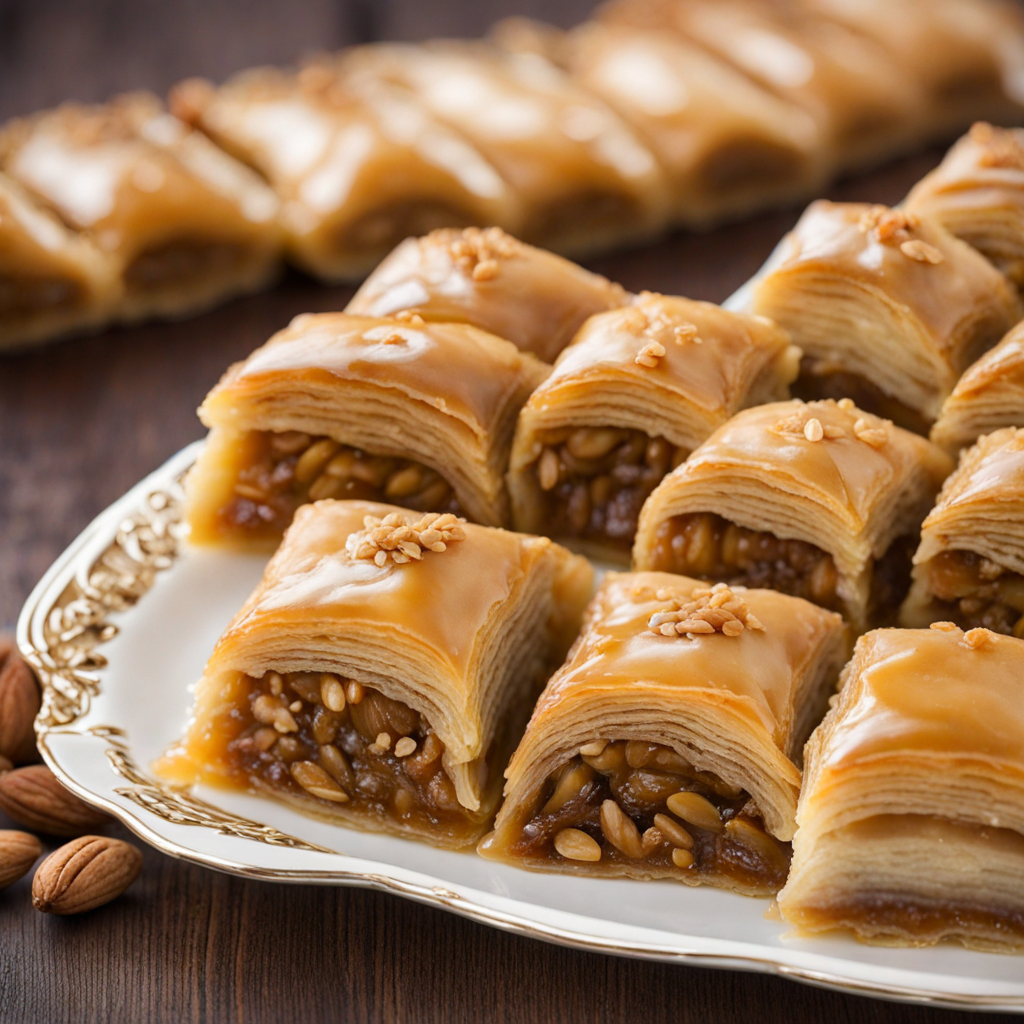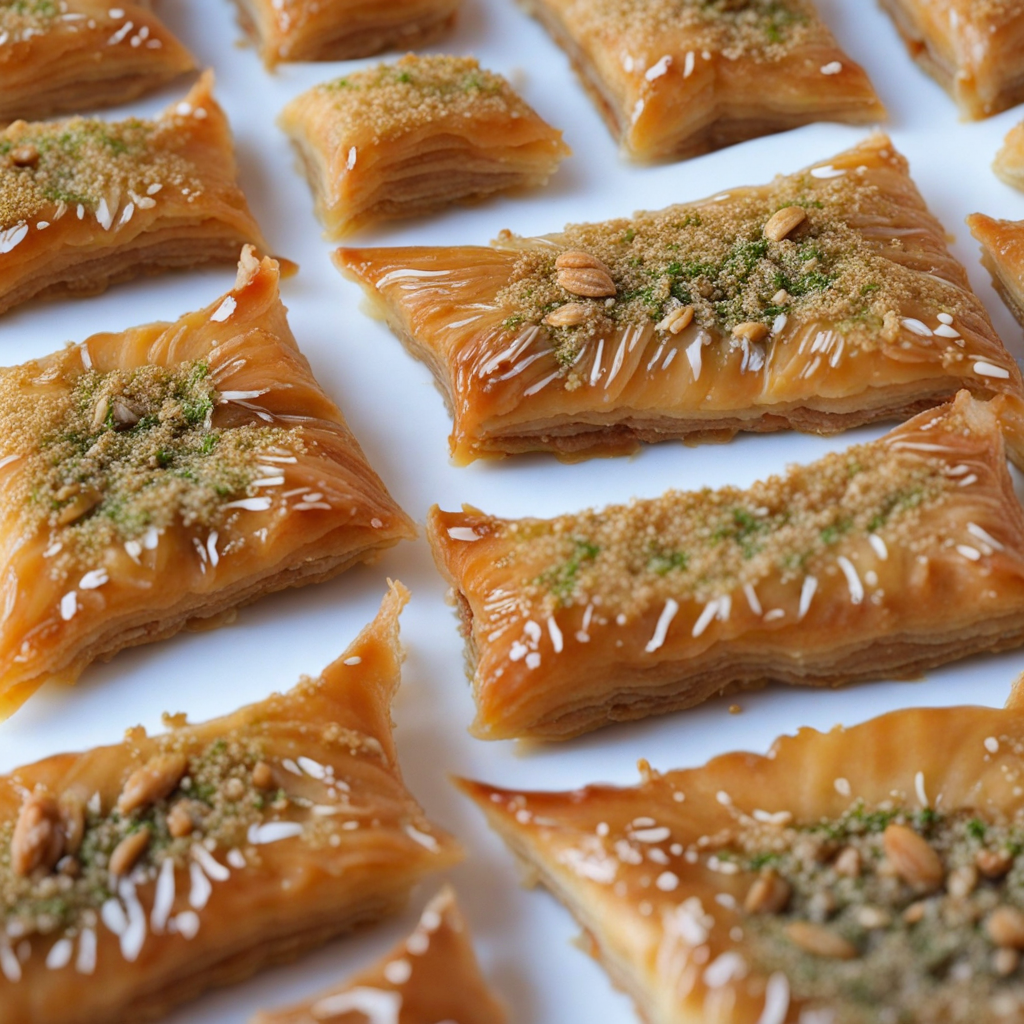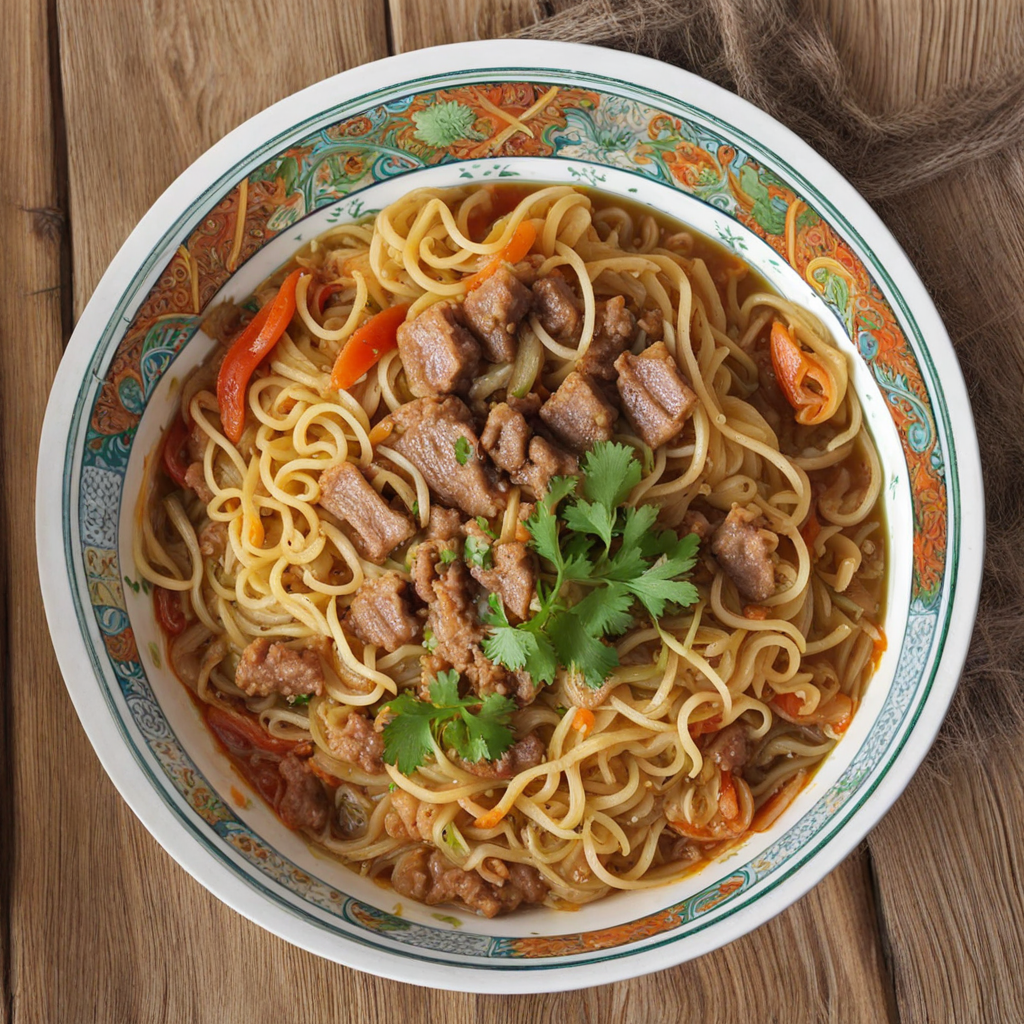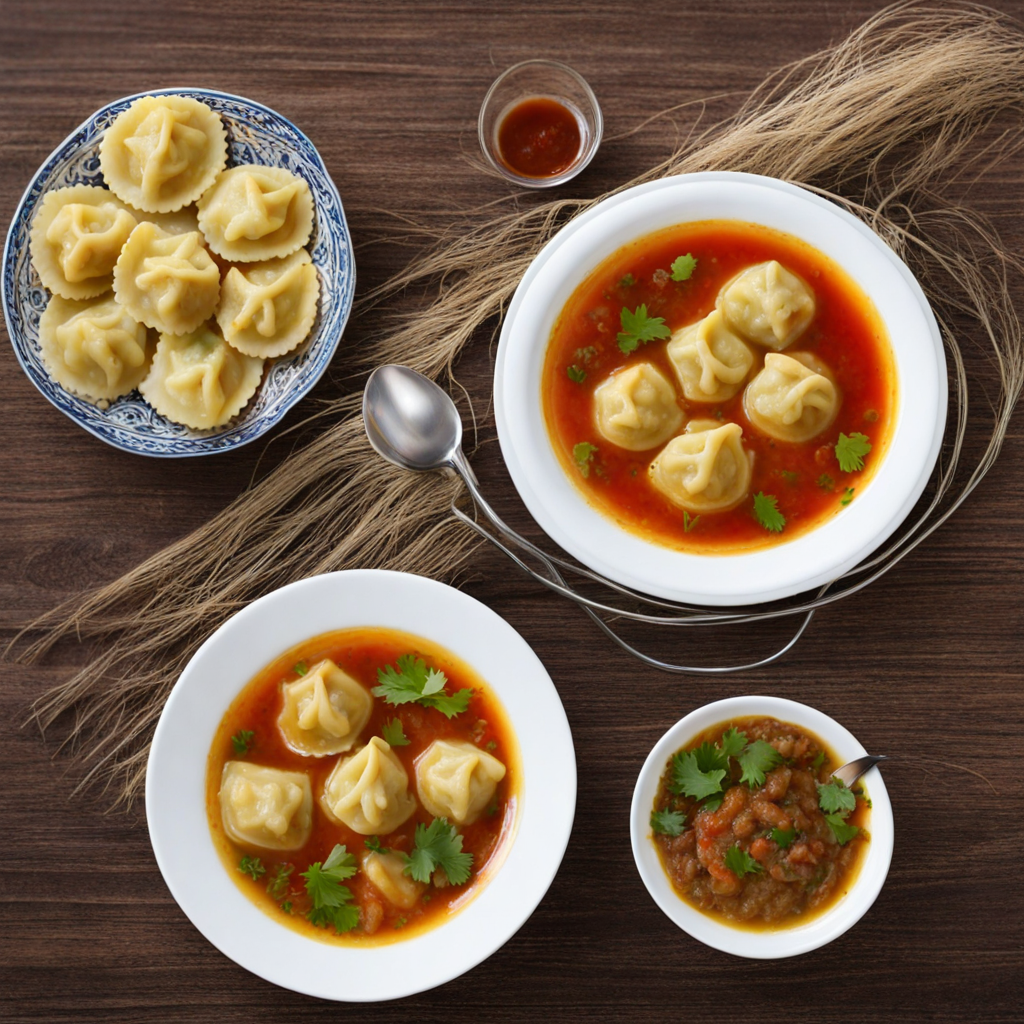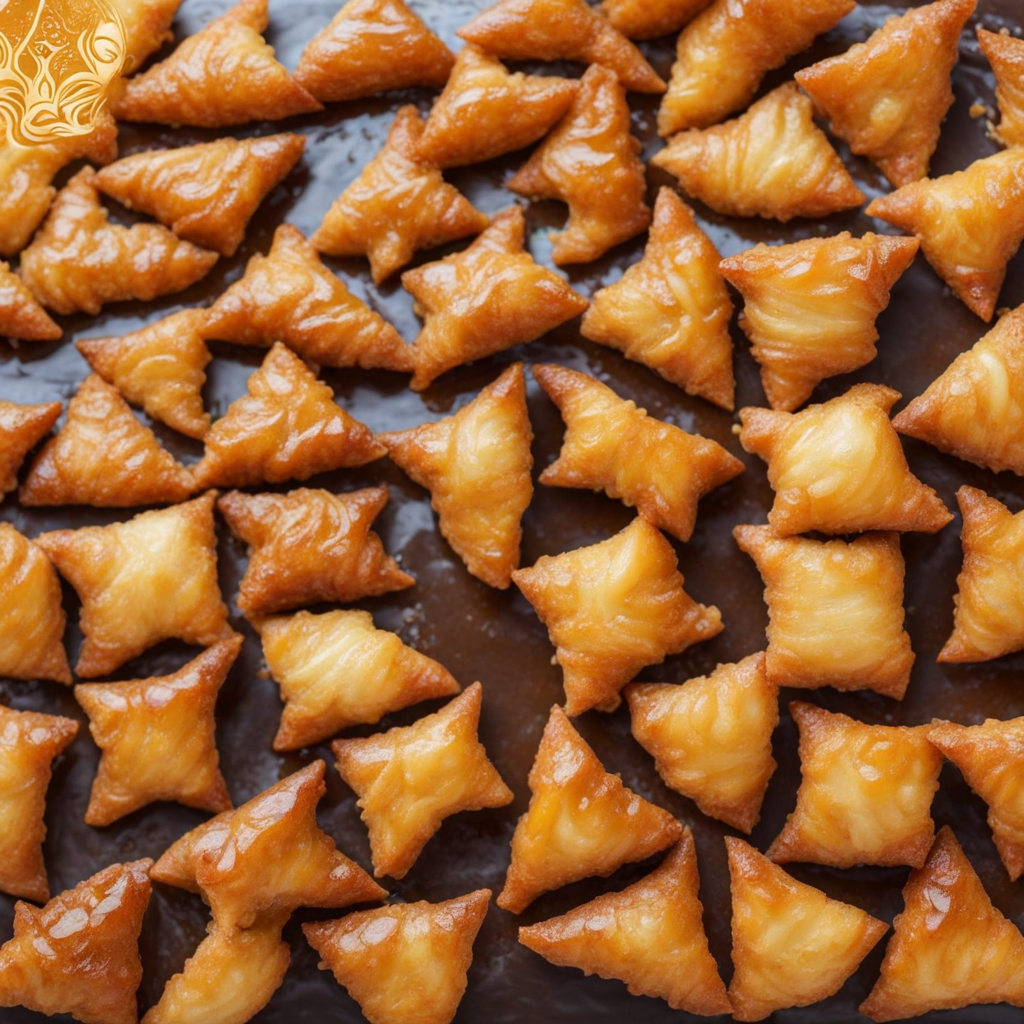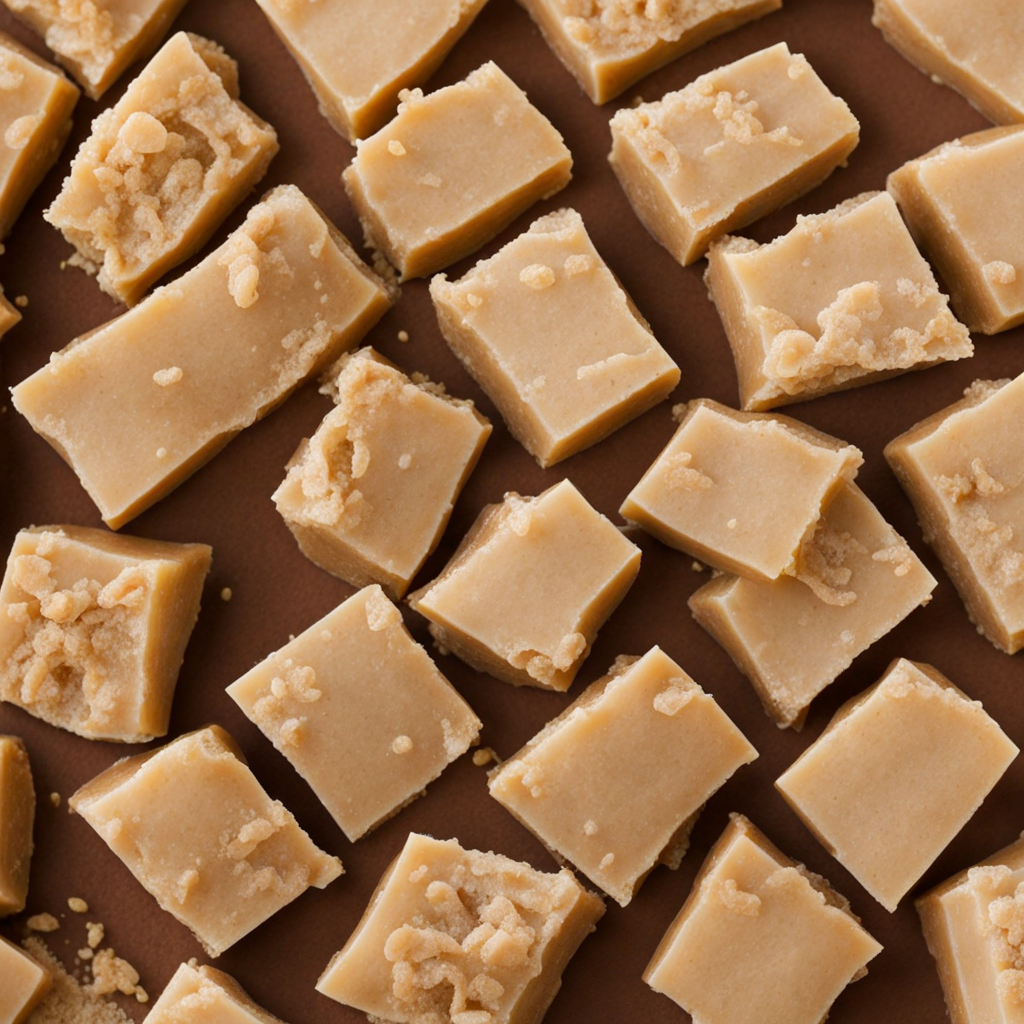Baklava
Baklava, a sweet and flaky pastry, is a delightful treat originating from the rich culinary traditions of Uzbekistan. It is crafted from layers of thin, delicate dough known as phyllo, which is meticulously brushed with melted butter and then filled with a generous mixture of finely chopped nuts, primarily walnuts or pistachios, sweetened with sugar and aromatic spices like cinnamon. The result is a harmonious blend of textures, where the crispiness of the outer layers contrasts beautifully with the nutty filling, creating an indulgent bite that melts in your mouth. Once assembled, the baklava is cut into diamond or square shapes before being baked to a golden perfection. The final touch involves drenching the warm pastry with a syrup made from honey, sugar, and sometimes a splash of rosewater or lemon juice, infusing each piece with a sweet, sticky glaze that enhances its flavor profile. This syrup not only adds sweetness but also helps to soften the layers, making each bite a luscious experience. Baklava is often served at special occasions and celebrations in Uzbekistan, symbolizing hospitality and joy. Its rich, aromatic qualities make it a perfect companion to a cup of strong tea or coffee, allowing the flavors to complement one another beautifully. Whether enjoyed as a dessert or a snack, baklava invites food lovers to explore its intricate flavors and textures, making it a must-try for anyone eager to discover the sweet side of Uzbek cuisine.
How It Became This Dish
The Delightful History of Baklava in Uzbekistan Baklava, a decadent dessert that often graces the tables of celebrations, holds a special place in the culinary traditions of Uzbekistan. This intricate pastry, known for its layers of phyllo dough, nuts, and sweet syrup, tells a story of cultural exchange, historical evolution, and the deep-rooted significance of hospitality in Uzbek society. #### Origins and Early History The origins of baklava can be traced back to ancient civilizations in the Near East, with roots possibly extending to the Assyrians who are believed to have made a form of layered bread with nuts and honey as early as the 8th century BCE. However, the version that would evolve into what we know as baklava today is more prominently associated with the Ottoman Empire, which flourished from the late 13th century until the early 20th century. The Ottomans, with their vast empire that included parts of Central Asia, played a pivotal role in the dissemination of culinary practices, including the preparation of baklava. It is thought that baklava was refined in the imperial kitchens of Topkapi Palace in Istanbul, where chefs experimented with layering techniques, baking methods, and the use of various nuts and syrups. The pastry became a symbol of luxury and was often served to royalty and dignitaries. As baklava traveled along trade routes, it picked up local influences and variations. The Silk Road, which connected Central Asia to the Mediterranean, facilitated not only the exchange of goods but also culinary ideas. Regions such as Persia, the Levant, and the Arabian Peninsula contributed to the evolution of baklava, leading to diverse interpretations of the dish, each with its own ingredients and preparation techniques. #### Cultural Significance in Uzbekistan In Uzbekistan, baklava is more than just a dessert; it embodies the spirit of hospitality and the rich cultural tapestry of the nation. It is commonly prepared during significant celebrations such as weddings, religious holidays, and family gatherings. The act of making baklava is often a communal affair, where family members come together to roll out the delicate layers of dough, chop the nuts, and prepare the sweet syrup, fostering a sense of unity and tradition. Uzbek baklava is characterized by its unique use of local ingredients, which highlights the agricultural bounty of the region. Almonds, walnuts, and pistachios are often used in the filling, combined with fragrant spices such as cardamom and cinnamon. The syrup is typically made from honey, sugar, and lemon juice, adding a touch of tartness that balances the sweetness of the pastry. The presentation of baklava is equally important in Uzbek culture. The dessert is often cut into diamond or square shapes and garnished with crushed nuts, making it visually appealing. During celebrations, baklava is typically served alongside tea, symbolizing warmth and camaraderie. Sharing baklava with guests is an expression of generosity and signifies the importance of hospitality in Uzbek culture. #### Development Over Time: From Tradition to Modernity As Uzbekistan navigated the currents of history—through the Soviet era and the subsequent independence in 1991—its culinary landscape, including baklava, underwent transformations. While traditional recipes and methods remained cherished, influences from neighboring countries and globalization introduced new flavors and techniques. During the Soviet period, Uzbekistan’s culinary identity was often overshadowed by a homogenized Soviet cuisine. However, the rich traditions, including the making of baklava, persisted within households and local communities. Families maintained their own recipes, often passed down through generations, ensuring that the art of baklava-making was preserved. In the years following independence, there has been a resurgence of interest in traditional Uzbek cuisine, with baklava taking center stage. Chefs across the country began to explore and reinterpret traditional recipes, experimenting with different nuts, syrups, and the incorporation of seasonal fruits. This creativity has led to the emergence of modern takes on baklava, appealing to both locals and tourists eager to experience Uzbekistan’s culinary heritage. Additionally, the rise of culinary tourism has brought baklava into the limelight on international platforms. Food festivals, cooking classes, and gastronomic tours highlight the artistry involved in making this beloved dessert, allowing visitors to engage directly with the culture and history of Uzbekistan. Social media has also played a pivotal role in popularizing baklava, with food enthusiasts sharing recipes and showcasing the beauty of this sweet delight. #### Conclusion: Baklava as a Culinary Ambassador Today, baklava stands as a testament to Uzbekistan's rich history and cultural diversity. It has transcended its origins to become a national symbol, representing the warmth and hospitality of the Uzbek people. With its delicate layers and harmonious flavors, baklava continues to captivate hearts and palates, bridging the past with the present. As Uzbekistan embraces its culinary heritage while navigating modern influences, baklava remains a cherished tradition, a sweet reminder of communal bonds and the joy of sharing. It is not merely a dessert but a celebration of life, culture, and the timeless art of hospitality that defines the essence of Uzbekistan. Whether enjoyed at a festive gathering or as a simple treat with tea, baklava embodies the spirit of connection, making it a beloved staple in Uzbekistan and beyond.
You may like
Discover local flavors from Uzbekistan


